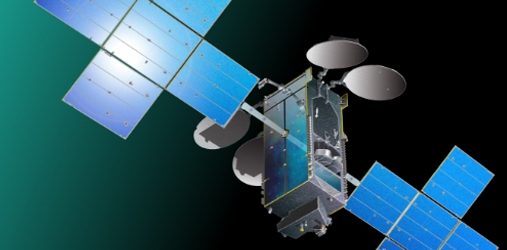Jupiter-3 a changemaker
April 5, 2024

EchoStar’s Jupiter-3 satellite is a true giant for subsidiary HughesNet. When stowed within the SpaceX Falcon Heavy rocket (on July 28th 2023) it was described as being about the size of a school bus. Within hours of its launch it was successfully receiving and sending signals.
However, today’s picture is not quite so rosy. Despite Hughes gaining approval for its new electronically steered antenna-based terminal (HL1120W) for OneWeb, itself a major coup, Hughes is suffering. It is accepted that Hughes is losing clients, in particular private consumers, to SpaceX’s Starlink.
Built by Maxar Technologies, Jupiter-3, with its massive 10-storey wide solar panels deployed precisely as planned and the 9-tonnes craft capable of handling well over 500 Gb/s, and with speeds of up to 100 Mb/s. Its 300 spot-beams each are capable of handling 500 MHz – there are problems.
Hughes says that Jupiter-3 is a true Ultra High-Density craft, and its main targets are its existing ground-based clients as well as seamlessly boosting connectivity for airline customers throughout the Americas, and through its partnerships covering Europe as well as the Mille East and Africa. It entered full service on January 12th.
But there are questions: Jupiter-3 is fighting its corner and while its capacity is undoubtedly impressive it was ordered back in 2017 – and designed ahead of that date – its construction was badly hit by component and labour delays caused by the Covid pandemic. It should have launched in 2021 which, if nothing else, would have given it a chance to establish itself before SpaceX encroached on its market. The delays were such that Maxar waived $57 million in fees as compensation for Hughes.
The satellite, also known as EchoStar XXIV, doubled HughesNet’s fleet capacity which is much needed from its 95 degrees West orbital position. Its portfolio of clients include telcos and their backhaul capacity and there are plenty of rural businesses and residential users which needed extra bandwidth.
Hamid Akhavan, CEO of parent company EchoStar, said: “This purpose-built satellite is engineered uniquely to meet our customers’ needs and target capacity where it’s needed most, such as the most rural regions of the Americas, so they can stay connected to the applications and services they depend on every day.”
That claim is true, but an examination of quarterly reports from Hughes Network Systems and its Middle East partner Yahsat, and their joint-venture Broadband Connectivity Solutions Ltd (BCS), formed in 2018 is 80 per cent owned by Yahsat and the balance by Hughes/EchoStar, shows problems. Jupiter-3’s coverage of Brazil is in the form of another j-v (HPE), where Hughes is the 80 per cent holder and Yahsat taking the 20 per cent slice.
Yahsat says BCS saw sales rise 6 per cent in 2023 to $25 million although its subscriber count rose just 1 per cent to 22,365 customers. Hughes, meanwhile, in its SEC filing on April 1st took a $33.4 million “impairment charge” on BCS and blaming “increased competition and the economic environment for this business”. Yahsat says only that revenues “may be impaired due to a rapid deterioration in the global macroeconomic environment” and that its Brazilian business continues to face headwinds in the form of increased competition.
HPE’s numbers are not spun out from its other Latino business but Hughes reports that its overall revenues from South and Central America suffered a fall of 9.6 per cent to $159.5 million last year.
Thankfully, Hughes is far from dead. It has a valuable business backlog ($1.97 billion as at December 31st 2023) and up 30 per cent y-o-y and has a handful of US government orders in hand which will help. It is also counting on the availability of Jupiter-3 to not only boost those numbers but to expand into other services.
However, Hughes core broadband subscriber numbers continue to fall. The subscriber numbers stood at 1.56 million in December 2022. On November 6th 2023 EchoStar said that Hughes had 1.06 million broadband subscribers. On March 1st, EchoStar COO Paul Gaske said that Hughes had lost 224,000 subscribers since 2022 and now had “approximately” 1 million subscribers.
Hughes must hope that its new agreement with OneWeb will help improve that picture.

Other posts by Chris Forrester:
- Intelsat C-band ‘insider trading’ case dismissed
- UK Space Agency funds de-orbit scheme for OneWeb
- AST SpaceMobile to launch satellites in August
- SpaceRISE silent on reports of demise
- Project Kuiper seeks India licence
- FAA suspends SpaceX launches
- SpaceX vs AST SpaceMobile
- Eumetsat explains Ariane 6 cancellation
- AST SpaceMobile examines emergency call obligations
